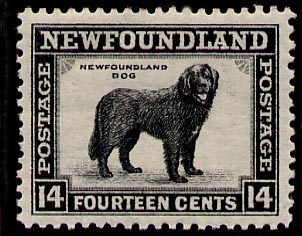
History

 |
Newfoundland History |
 |
Conditions in Newfoundland in 1925-1926
[Canadian Annual Review , 1925-26; for the full citation, see the end of the text]
The Speech from the Throne delivered by H. E. Sir William Lamond Allardyce, in the Legislature on Feb. 18, 1925 , indicated flourishing industrial conditions, except at Bell Island , where iron mining was temporarily paralyzed by a strike on the property of the British Empire Steel Corporation. On Mar. 13 the Government effected a settlement of the dispute, the Company agreeing to restore the old wages and working hours and to consider paying increased wages later on. The Government in its turn waived payment of royalties on the ore mined. In August the Directors of the Corporation asked the Government for a reduced tax on all ore exported to other parts of the British Empire .
The Budget presented by Hon. Sir John Crosbie, Minister of Finance, on Apr. 8th, 1925 , indicated a surplus and an increase in the estimated revenue over expenditure of $1,750,000. The public debt was $57,000,000. For the first time the nationalized rail and steamship services revealed a balance on the right side.
On Aug. 24th, 1925 , a party of Canadian and British parliamentarians witnessed the opening of a new paper mill at Cornerbrook on the West Coast. The plant, with a daily newsprint capacity of 400 tons and is owned by the Anglo-Newfoundland Development Company, in which the Armstrong-Whitworth Company and the Reid-Newfoundland Company are the main interests. The enterprise contemplated an ultimate expenditure of $20,000,000 on paper mills and hydro-electric power.
Another failure marked the tentative efforts of Newfoundland and Quebec to settle the old Labrador boundary dispute, - a disagreement over the width of Newfoundland's strip along the Labrador Coast. Newfoundland was willing to sell the hinterland of Labrador to Quebec for $15,000,000. Quebec refused the offer and certain points in the issue were referred to the Imperial Privy Council.
On May 18, 1926 , Sir John Crosbie presented a Budget showing a revenue of $9,783,188 and expenditures of $9,436,185 for the previous fiscal year. The public debt was over $67,017,998. The increase in exports over the previous year was $2,518,615, and in imports $8,727,492, the great excess of the latter being largely accounted for in the recent developments of the Newfoundland Power and Paper Company, and the Anglo Development Company at Grand Falls. The total trade of the colony was $59,994,860, the highest ever reached in any normal year. The savings bank accounts amounted to $23,179,123 of which $1,043,984 was added during the fiscal year. Investments in life insurance amount to $28,000,000.
At the end of June 30, 1925 , Newfoundland had 1,130 schools; 1,471 school departments; 1,529 teachers (men 463, women, 1,066); the number of teachers in training was 91; total number of pupils, 59,393; and average daily attendance, 36,039. In the Report of the Board of Liquor Control for the year ending Jan. 31, 1926, it was stated that revenue paid in Customs duty amounted to $412,732 with net profits of the Board for the year $285,258. For the year ending June 30, 1925 , the total expenditures of the Department of Post and Telegraphs were $1,263,656; total revenue, $86,147; excess of Telegraphs expenditure over revenue, $232,079; increased Postal revenue, $32,321; and increased telegraph revenue, $20,888.
The total value of industrial products for the calendar year 1925 was $24,600,000 - $11,500,000 representing the harvest of the sea.
Source : " Newfoundland ", in The Canadian Annual Review of Public Affairs, 1925-26, Toronto, The Canadian Review Company, 1926, 828p., pp. 160-161.
© 2004 Claude Bélanger, Marianopolis College |